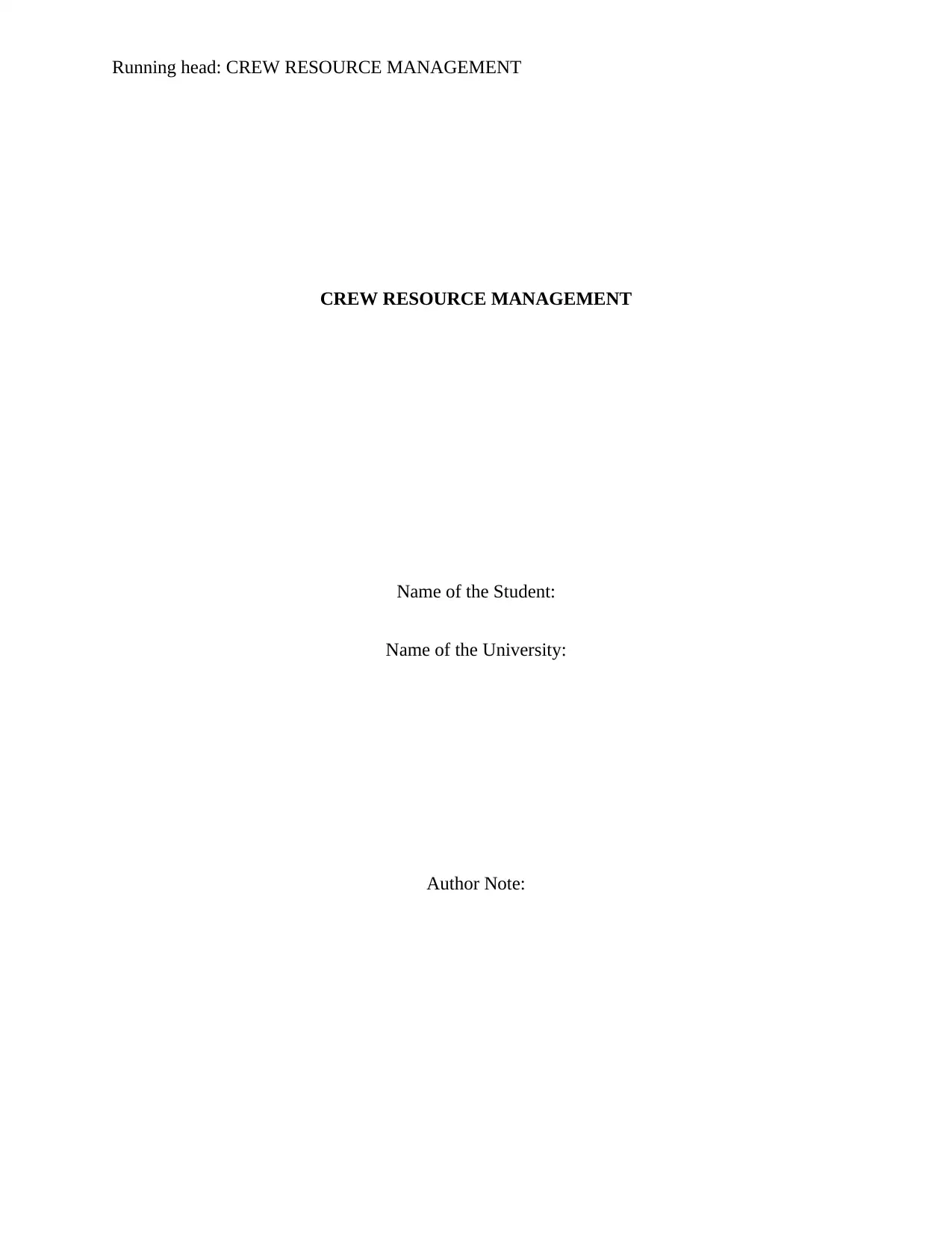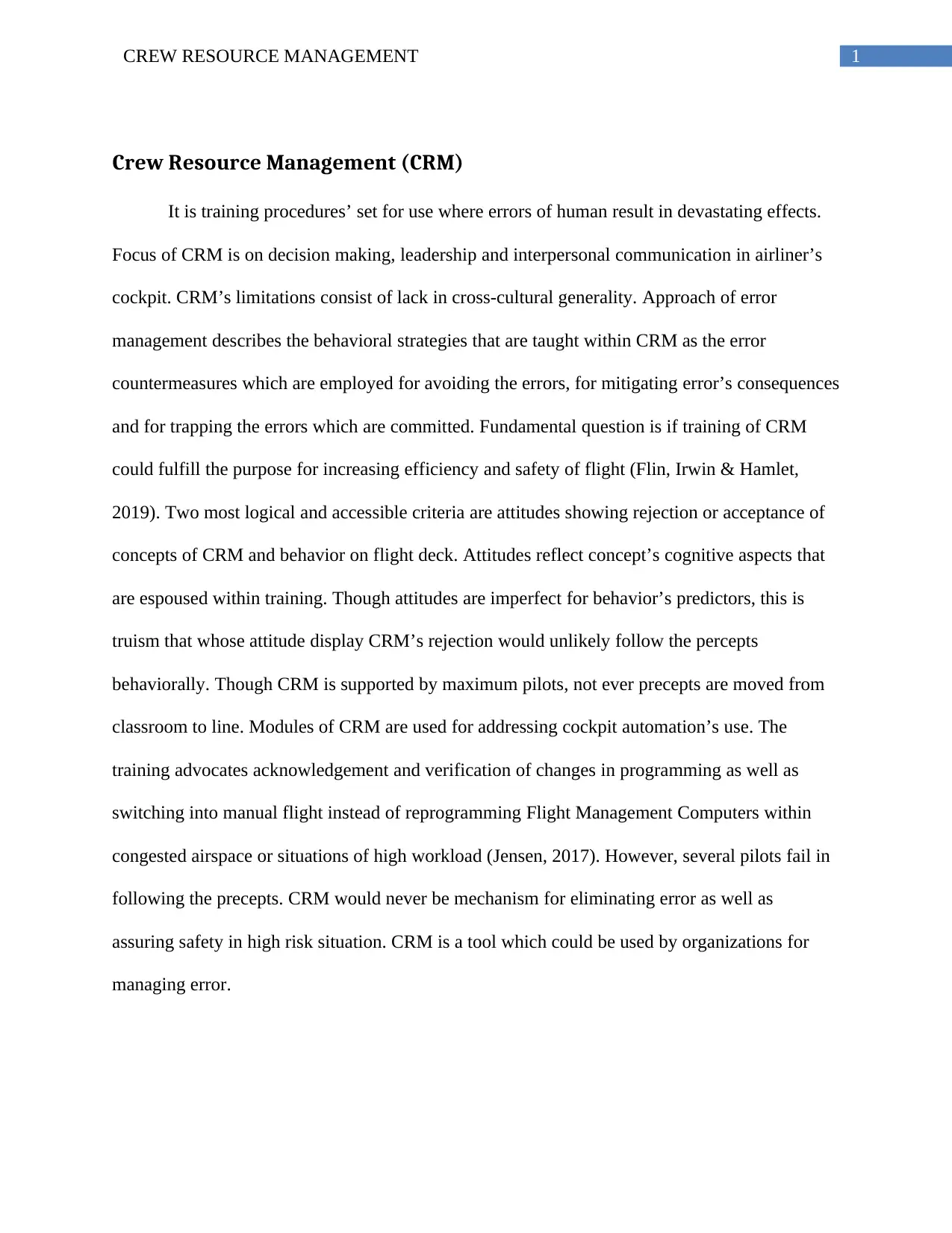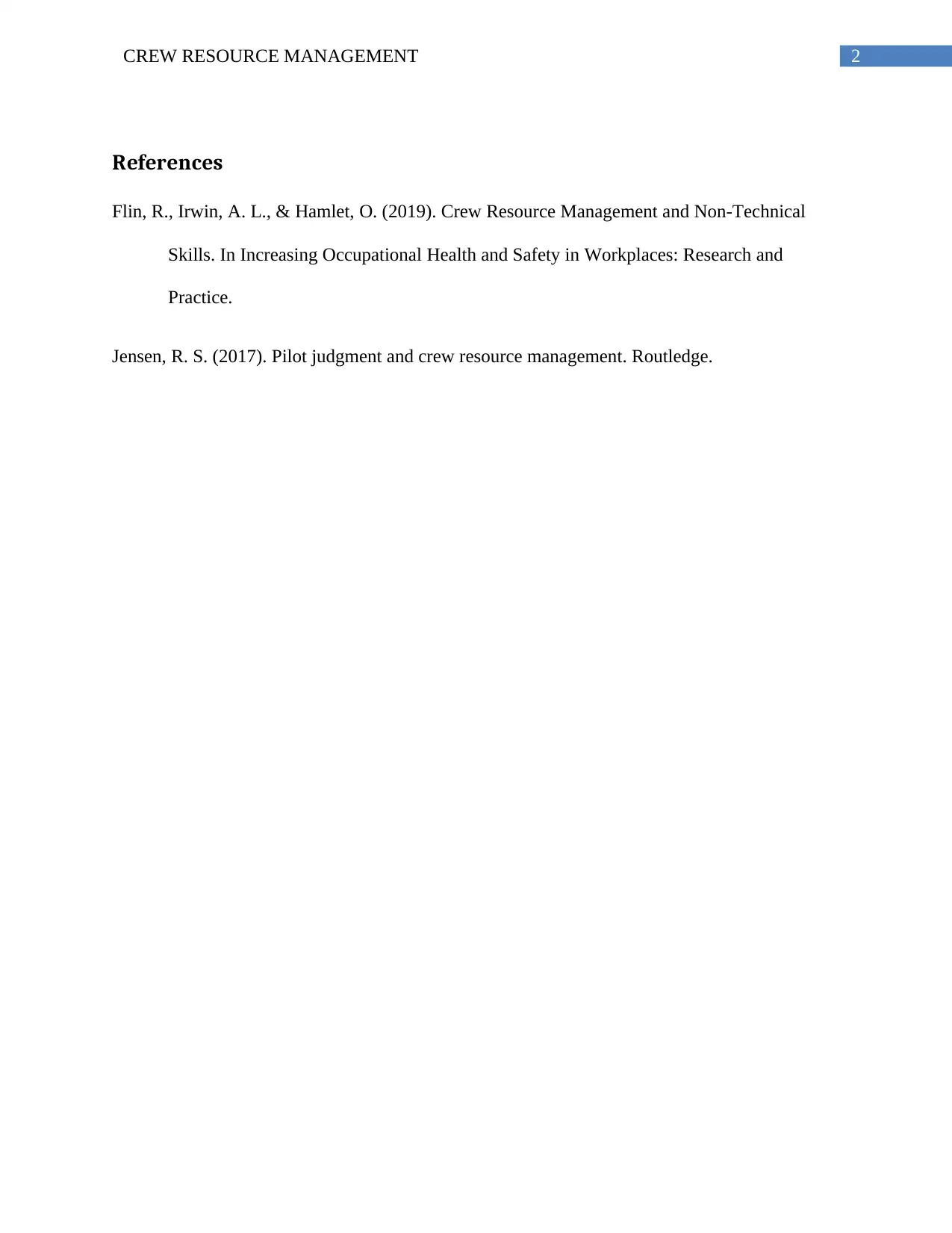Crew Resource Management Application in Commercial Aviation Report
VerifiedAdded on 2022/08/19
|3
|379
|12
Report
AI Summary
This report examines the application of Crew Resource Management (CRM) in commercial aviation, focusing on its role in error management during the final approach and landing phase. The study, based on data from the FAA and NTSB, investigates the relationship between airline management practices and CRM-related accident/incident causes. The research covers accidents and incidents between 2002 and 2012, analyzing how CRM factors contribute to flight safety. The report discusses CRM's limitations, such as its lack of cross-cultural generality, and the importance of pilot attitudes toward CRM. It also addresses the use of CRM modules in cockpit automation and the challenges in implementing CRM principles, concluding that CRM is a critical tool for managing errors and enhancing aviation safety. The report provides insights into how CRM can be applied to improve decision-making, communication, and overall flight safety in commercial aviation.
1 out of 3







![[object Object]](/_next/static/media/star-bottom.7253800d.svg)